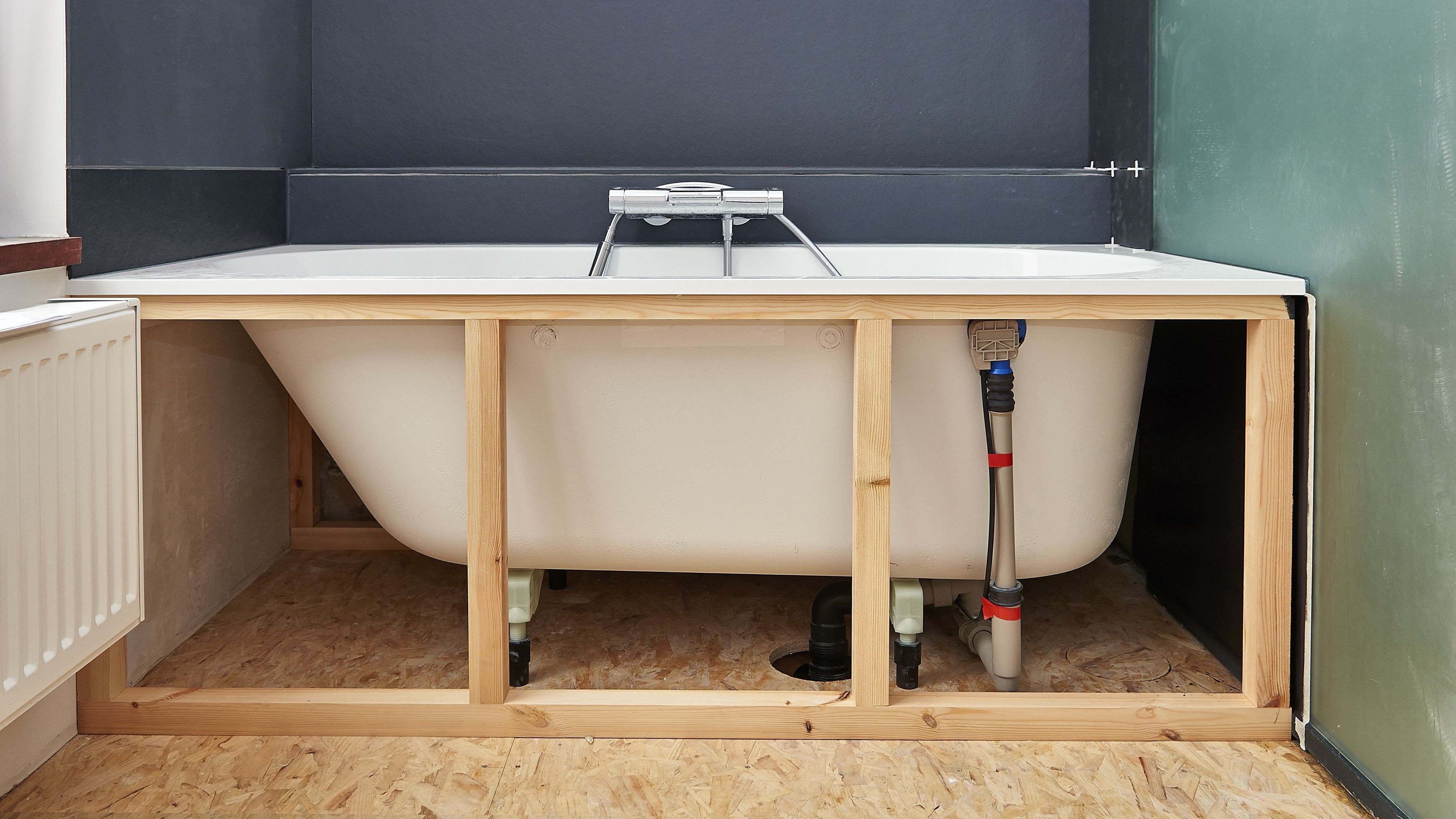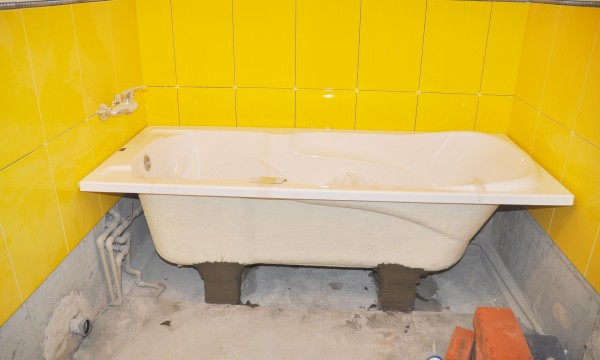This article following next involving Installing A Bathtub is incredibly engaging. Give it a try and make your own personal findings.

Setting up a tub isn't exactly brain surgery, but it does call for solid plumbing, woodworking, as well as sometimes, tiling abilities. Replacing an old tub with a new one is additionally a reasonably difficult job. If the old tub is easily accessible, the job can relocate immediately; if you need to open a wall surface to remove the old tub as well as place the new bath tub, the task is a lot harder. In either case, the job is within a home handyman's skills, although you will certainly need an assistant to move out the old tub and also embeded in the brand-new one. Make sure you have actually certified yourself for the work as well as fit attempting it. As opposed to hiring a service provider to take over a halfway-completed task, it is much better to consider utilizing one prior to you begin. Opportunities are you may require a specialist plumber to make tube links.
This article will certainly aid you set up a brand-new tub in your restroom if you have actually already gotten a new tub and also don't need to transform the arrangement of your previous water system pipelines.
Your tools as well as product checklist must consist of the following:
Removing Old Touches
If you need to change old taps with brand-new ones as a part of your installment, after that the first thing you should do is detach the water system. After doing so, activate the faucets to drain any water staying in the system. The process of eliminating the existing faucets can be rather troublesome because of the restricted gain access to that is typically the situation.
Use a basin wrench (crowsfoot spanner) or a tap tool to reverse the nut that attaches the supply pipelines to the faucets. Have a fabric ready for the remaining water that will come from the pipelines. As soon as the supply pipelines have actually been eliminated, utilize the exact same tool to loosen the nut that holds the taps onto the bath/basin. You will need to stop the single taps from turning during this process. Once the faucets have actually been gotten rid of, the holes in the bath/basin will certainly need to be cleansed of any kind of old securing substance.
Before proceeding to fit the new taps, contrast the pipeline links on the old taps to the brand-new faucets. If the old faucets are longer than the new taps, then a shank adapter is required for the brand-new taps to fit.
Fitting New Touches
If the tails of the brand-new taps are plastic, then you will certainly need a plastic connector to stop damages to the thread. One end of the connector fits on the plastic tail of the faucet and also the various other end offers a connection to the existent supply pipelines.
If you require to fit a monobloc, after that you will call for minimizing couplers, which links the 10mm pipe of the monobloc to the standard 15mm supply pipeline.
Next off, position the tap in the mounting opening in the bath/basin making sure that the washers are in area in between the tap and the sink. Safeguard the faucet in place with the manufacturer given backnut. When the faucet is safely in place, the supply pipes can be attached to the tails of the taps. The taps can either be attached by using corrugated copper piping or with regular tap connectors. The previous type should be linked to the tap finishes first, tightening up only by hand. The supply pipelines can later be attached to the other end. Tighten up both ends with a spanner after both ends have been attached.
Installing the Bath tub
Utilizing both wood boards under its feet, place the bath tub in the needed position. The wood boards are useful in equally spreading out the weight of the tub over the location of the boards rather than concentrating all the weight onto four little factors.
The next objective is to ensure that the tub is leveled all round. This can be attained by checking the level and changing the feet on the bath tub until the level reads level.
To mount taps, fit all-time low of the outermost flexible faucet adapter to the suitable supply pipeline by making a compression join; after that do the same for the various other faucet.
Switch on the water system and also check all joints as well as brand-new pipework for leaks as well as tighten them if needed. Load the bathtub and additionally check the overflow outlet as well as the regular outlet for leaks.
Lastly, repair the bathroom paneling as explained in the maker's user's manual. Tiling and sealing around the tub ought to wait till the bath tub has been used a minimum of when as this will certainly resolve it into its final setting.
Planning for the Installment
Firstly, the supporting framework provided with the bath must be fitted (if called for) according to the supplier's instructions. Next off, fit the taps or mixer to the tub. When suitable the faucet block, it is necessary to make sure that if the tap includes a plastic washing machine, it is fitted in between the bath and the taps. On a plastic bathroom, it is additionally reasonable to fit a supporting plate under the taps system to avoid pressure on the bath tub.
Fit the flexible tap ports to the bottom of the two faucets making use of 2 nuts and also olives (sometimes provided with the tub). Fit the plug-hole outlet by smearing mastic filler round the sink outlet hole, and after that pass the electrical outlet via the hole in the bathroom. Make use of the nut supplied by the manufacturer to fit the plug-hole. Analyze the plug-hole outlet for an inlet on the side for the overflow pipe.
Next, fit the end of the versatile overflow pipe to the overflow outlet. After that, screw the pipe to the overflow face which ought to be fitted inside the bathroom. Make certain you utilize all of the supplied washers.
Link the trap to the bottom of the waste outlet on the bath tub by winding the string of the waste electrical outlet with silicone mastic or PTFE tape, and also screw on the trap to the outlet. Connect the bottom of the overflow tube in a similar manner.The bath should now prepare to be suited its last placement.
Tiling Around the Bath tub
In the location where the bathroom satisfies the ceramic tile, it is required to seal the joins with a silicone rubber caulking. This is important as the fitting can relocate sufficient to split a stiff seal, triggering the water to permeate the wall in between the bathroom as well as the tiling, resulting in difficulties with moisture as well as possible leaks to the ceiling listed below.
You can pick from a range of coloured sealants to blend in your components and also installations. They are offered in tubes and cartridges, and also are capable of sealing voids as much as a width of 3mm (1/8 inch). If you have a bigger space to fill, you can load it with twists of drenched paper or soft rope. Remember to constantly fill up the bathtub with water prior to sealing, to permit the motion experienced when the tub remains in use. The sealer can split fairly very early if you do not take into consideration this activity prior to sealing.
Conversely, ceramic coving or quadrant tiles can be used to border the bathroom or shower tray. Plastic strips of coving, which are easy to use and reduce to dimension, are also conveniently offered on the market. It is suggested to fit the ceramic tiles using waterproof or water resistant adhesive as well as grout.
Bathtub Installation
How Important Is A Bathtub To Your Home?
High-quality baths, showers, and other bathroom updates are necessary when considering a smart investment in your home. It’s a room that you go to every day and one that is constantly being used by guests.The bathroom is one of the top trafficked rooms in a home and also one of the most valuable in terms of home resale.
Install Piping Before Tub
You will be using your existing drain and waste vent system, but pipes required include the hot and cold water supply lines and a pipe leading to a shower head. A mixing valve and shower head are also needed. Air chambers may be required.
Position the Tub
Lower the tub into place so that the continuous flange fits against the wall studs and rests on 1’x4' or 2’x4' supports. Anchor the tub to the enclosure with nails or screws inserted through the flanges into the studs.
NOTE: Remember, bathtubs and shower stalls may require support framing. A bathtub filled with water is extremely heavy, so check building codes and framing support before installing the tub.
Assemble Drain Connections
Assemble the bathtub drain connections by connecting the tub overflow with the tub drain above the trap, not beyond it. The trap will have a compression fitting that screws over the arm of the overflow assembly.
Place a Pipe For the Shower Head
First, locate a brass female threaded winged fitting and attach it to a framing support via a screw or a nail. Then run a pipe up the wall for the shower head. Sweat or solder the other side of the brass fitting to the top of the pipe.
Attaching Hot and Cold Water Lines
Attach your water lines for both hot and cold by sweating these directly into the hot and cold ports of the mixing valve. The mixing valve will be how water enters the tub’s system, not by the pipes themselves.
Install the Spout
Extend a piece of 1/2 inch pipe, or whichever length is specified in the manufacturer’s instructions, for the tub spout. Sweat on a male threaded fitting at the end of the pipe or use a brass nipple of the proper length and a 1/2 inch cap.
NOTE: At this point you should have your rough-in plumbing work inspected before proceeding further.
Check For Leaks
Restore the water pressure and check the drain connection and the supply pipes for any sign of leaking.
estore the Bathroom Wall
Replace the wall with moisture-resistant drywall as a base for your wall covering. Seal the joints between the wall and your new tub with silicone caulk as protection against water seepage.
https://www.berkeys.com/2016/12/02/bathtub-installation-dallas/

I recently found that article about A Step-by-Step Guide to Installing a Bathtub when doing a search on the search engines. Appreciated our content? Please share it. Help somebody else discover it. Thanks so much for your time spent reading it.
Schedule